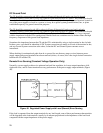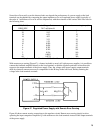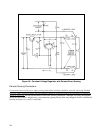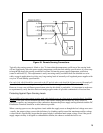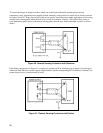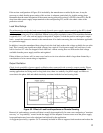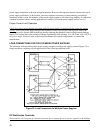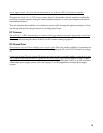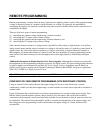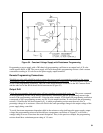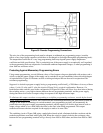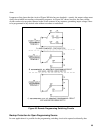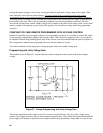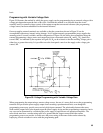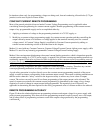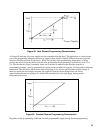
80
REMOTE PROGRAMMING
Remote programming, a feature found on many Agilent power supplies, permits control of the regulated output
voltage or current by means of a remotely varied resistance or voltage. It is generally accomplished by
restrapping the supply's rear terminals so that the front panel control is disabled and a remote control device is
connected to the supply.
There are four basic types of remote programming:
(1) controlling the constant voltage output using a remote resistance,
(2) controlling the CV output using a remote voltage,
(3) controlling the constant current output using a remote resistance, and
(4) controlling the CC output using a remote voltage.
Notice that the remote resistance or voltage can be controlled by either analog or digital means. As used here,
analog control means that the value of resistance or voltage is selected by means of a switch or control knob. In
digital control, the value of the remote resistance or voltage is selected by an Agilent Desktop Computer or
Minicomputer. No matter what method of control is used, the basic principles of remote programming are the
same and all of the basic drawing and rules throughout this section apply equally to both analog and digital
control.
Additional Information on Digital Interfaces For Power Supplies. Although this section does not describe
the equipment nor the programming techniques necessary for digital control, all of the existing digital interfaces
for power supplies are summarized in Agilent's DC Power Supply Catalog. In addition, specific details on
digital control of power supplies on the Agilent Technologies Interface Bus (GPIB)* are given in Application
Note 250-1, GPIB/Power Supply Interface Guide.
*The GPIB is Agilent Technologies' implementation of IEEE Standard 488 (ANSI Standard MC1.1).
CONSTANT VOLTAGE REMOTE PROGRAMMING WITH RESISTANCE CONTROL
Using an external resistor and/or rheostat, the output voltage can be set to some fixed value, or made
continuously variable over the entire output range, or made variable over some narrow span above and below a
nominal value.
Figure 54 illustrates the essential details of resistance programming of a constant voltage power supply. Note
that this differs from the normal constant voltage circuit in only one respect--the circuit points normally
connected to the front panel control have been made available on rear terminals so that an external control can
be substituted. The current flowing through R
P
and R
R
is constant and independent of the output voltage, and
the voltage across the programming resistor (and therefore the output voltage) is a linear function of the
resistance R
P
.



